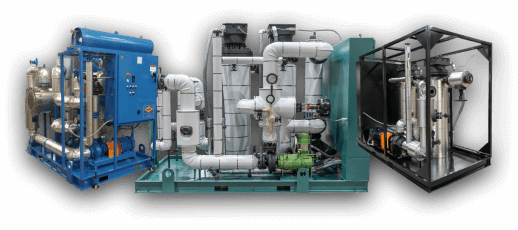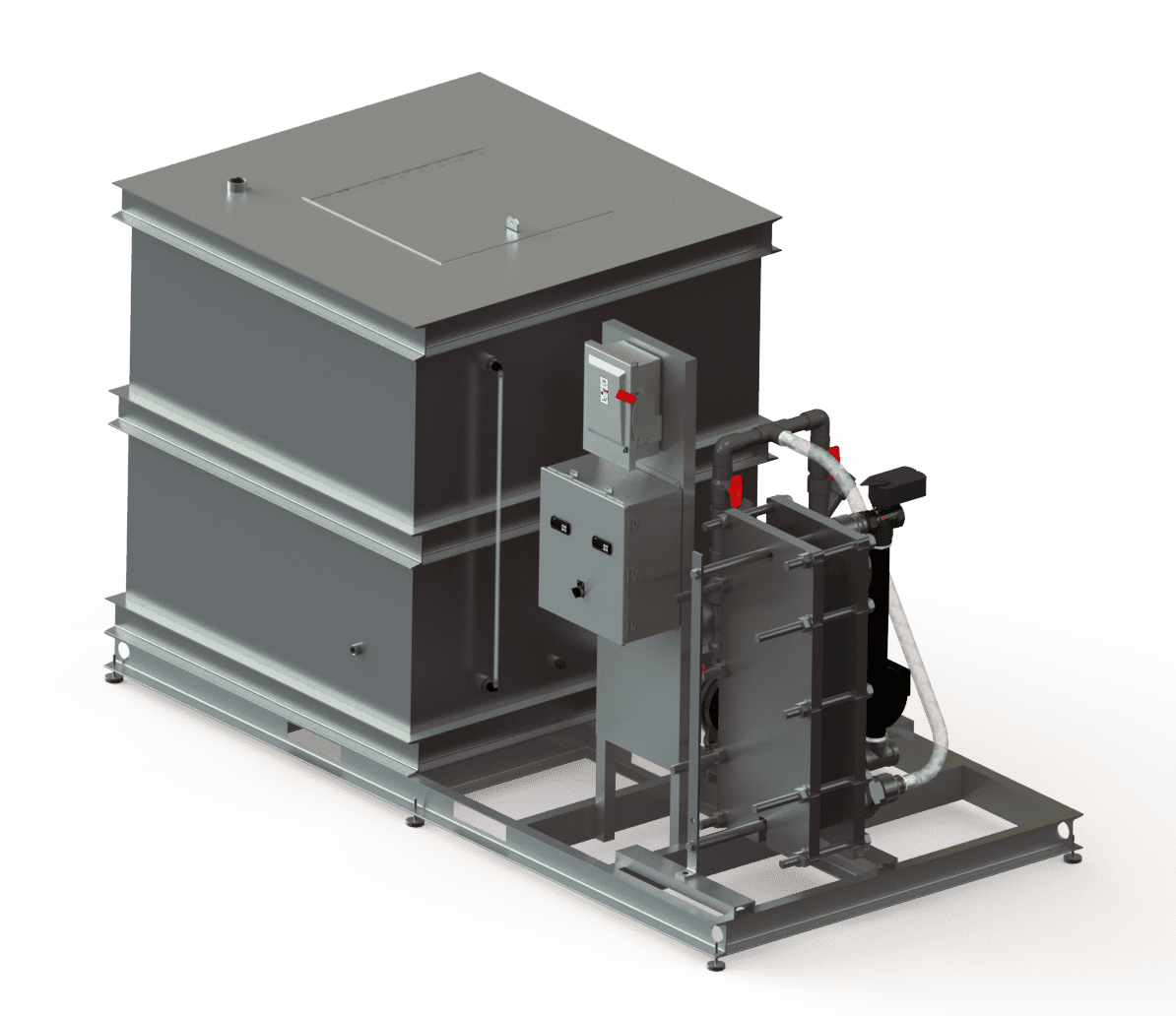Live Data Feedback: How DVS Heat Transfer Systems Enable Predictive Maintenance
Wiki Article
Advancements in Heat Transfer Systems: What You Required to Know for Optimum Efficiency
Advancements in Heat transfer systems are changing efficiency across different markets. Advanced products like graphene and nanofluids assure considerable improvements in thermal conductivity. Meanwhile, the assimilation of IoT and machine discovering uses possibilities for real-time surveillance and boosted power efficiency. The landscape of thermal administration is swiftly progressing. Recognizing these growths is important for accomplishing ideal system performance and sustainability in the future. What details developments are forming this improvement?Emerging Materials for Boosted Heat Transfer

Advanced Heat Exchanger Styles
While traditional Heat exchangers have actually served their function in different applications, progressed styles are now arising to satisfy the raising demands for performance and performance. These cutting-edge styles, such as plate, shell-and-tube, and finned-tube Heat exchangers, incorporate improved surface area areas and boosted circulation patterns to increase thermal transfer rates. On top of that, portable layouts permit lowered area needs without jeopardizing efficiency. Advanced materials, such as composites and corrosion-resistant alloys, additionally improve longevity and performance under severe conditions. In addition, simulation innovations and computational liquid dynamics are progressively employed to fine-tune these layouts, guaranteeing peak Heat transfer attributes. As markets seek to minimize energy usage and maximize result, the adoption of advanced Heat exchanger layouts is essential in attaining these objectives.The Function of Nanotechnology in Heat Transfer
Nanotechnology plays a crucial duty in enhancing thermal conductivity within Heat transfer systems. By adjusting materials at the nanoscale, scientists have achieved considerable improvements in energy effectiveness. These innovations not just maximize performance yet also add to more lasting power solutions.Improved Thermal Conductivity
Significant improvements in thermal conductivity have arised via the application of nanotechnology, changing Heat transfer systems throughout different sectors. By including nanoparticles into Heat transfer liquids and products, researchers have accomplished exceptional increases in thermal conductivity. These nanoparticles, such as carbon nanotubes, graphene, and metal oxides, boost the Heat transfer properties as a result of their high surface area and special thermal qualities. The resulting composites show enhanced efficiency in applications ranging from electronic devices cooling down systems to renewable resource innovations. The capability to customize the size, shape, and make-up of nanoparticles enables for enhanced thermal monitoring options. Consequently, nanotechnology proceeds to play an essential function in the advancement of extra reliable and reliable Heat transfer systems, leading the way for improved commercial applications.
Power Performance Improvements

Assimilation of IoT in Heat Transfer Solutions
The combination of IoT in Heat transfer systems introduces the execution of clever sensing units that boost operational performance. These sensors allow real-time information surveillance, permitting prompt changes and optimizations. This technical advancement has the possible to substantially boost efficiency and energy administration in Heat transfer applications.Smart Sensors Execution
As Heat transfer systems evolve, the combination of smart sensing units with the Web of Points (IoT) has emerged as a transformative strategy. These sensors enable real-time tracking of temperature, pressure, and circulation rates, improving system performance and integrity. By accumulating and transferring data, they help with aggressive maintenance, minimizing the danger of system failings. Furthermore, wise sensing units add to power financial savings by refining functional criteria based upon environmental problems. Their capacity to examine anomalies and fads enables notified decision-making, ensuring peak efficiency of Heat transfer systems. As markets increasingly embrace this technology, the implementation of wise sensors stands to change just how Heat transfer systems are managed, leading the way for better sustainability and improved efficiency outcomes.Real-Time Data Surveillance
Exactly how can real-time data keeping track of enhance the effectiveness of Heat transfer systems? By incorporating Internet of Things (IoT) innovation, Heat transfer systems can utilize constant data collection from clever sensing units. This real-time surveillance enables immediate evaluation of temperature, flow, and pressure prices, making it possible for operators to determine ineffectiveness without delay. Subsequently, changes can be made to optimize efficiency, learn the facts here now reduce power usage, and prolong equipment life expectancy. Additionally, anticipating upkeep can be applied, lessening unforeseen downtime and pricey fixings. The capability to picture performance metrics with control panels improves decision-making, cultivating a positive method to system administration. Eventually, real-time information monitoring not just improves functional performance however likewise adds to sustainability goals within industrial processes.Power Performance and Sustainability Trends
Power performance and sustainability fads are reshaping the landscape of Heat transfer systems, driving development and conformity across various sectors. Organizations are increasingly prioritizing energy-efficient styles to reduce operational expenses and minimize environmental effects. The integration of sustainable power resources is becoming much more widespread, allowing Heat transfer systems to run sustainably while fulfilling regulative requirements. Furthermore, developments in products and innovations promote lower power consumption and improve general efficiency. Lifecycle assessments are additionally gaining traction, allowing business to review the environmental impact of Heat transfer systems from manufacturing to disposal. This concentrate on sustainability not just sustains company duty but also placements companies competitively in a market where customers significantly favor environmentally friendly services. As a result, power effectiveness and sustainability continue to be essential factors to consider for future developments in Heat transfer technology.Technologies in Thermal Management Solutions
While the need for reliable Heat transfer remains to climb, advancements in thermal monitoring services are emerging to deal with both performance and sustainability challenges. Advanced products, such as phase change products and nanofluids, are being established to boost Heat transfer efficiency - DVS Heat Transfer Systems. These products enhance thermal conductivity and permit better temperature level regulation in various applications. In addition, modern technologies like active thermal control systems are acquiring grip, allowing real-time changes to manage Heat circulation effectively. These systems add to power cost savings and lower the environmental influence of thermal procedures. Additionally, the assimilation of IoT in thermal management promotes tracking and anticipating upkeep, ensuring maximized efficiency and durability of Heat transfer systems. Overall, these developments represent considerable strides towards even more lasting thermal administration practicesFuture Instructions in Heat Transfer Modern Technology
Emerging innovations in thermal monitoring options signify a promising future for Heat transfer technology. Researchers are significantly concentrating on creating materials with premium thermal conductivity and enhanced energy effectiveness. Technologies such as nanofluids, which consist of suspended nanoparticles, supply substantial improvements in Heat transfer efficiency. Additionally, the integration of smart materials that adapt to varying temperature level problems is obtaining traction, enabling more responsive and reliable systems. The rise of additive manufacturing techniques is likewise allowing the layout of intricate Heat exchanger geometries that maximize liquid circulation. The execution of device understanding formulas is prepared for to change the optimization of Heat transfer systems, assisting in predictive maintenance and performance enhancement. Collectively, these innovations are poised to change the landscape of Heat transfer technologies in different markets.
Regularly Asked Concerns

How Do I Select the Right Heat Transfer System for My Application?
Choosing the right Heat transfer system includes examining application demands, consisting of temperature varieties, liquid residential properties, and performance demands. Analyzing system types, maintenance factors to consider, and cost-effectiveness likewise plays a necessary duty in making an informed choice.What Are the Upkeep Demands for Advanced Heat Exchangers?
Upkeep requirements for sophisticated Heat exchangers normally include routine evaluations, keeping an eye on for leakages, cleaning of surfaces, and ensuring excellent circulation rates. Following maker standards assurances effective operation and prolongs the equipment's lifespan.
How Do Environmental Elements Affect Heat Transfer Performance?
Ecological elements considerably influence Heat transfer effectiveness. Variations in moisture, temperature level, and airflow effect thermal conductivity and convective Heat transfer, ultimately affecting system efficiency and requiring factor to consider throughout the style and procedure of Heat transfer systems.What Safety Specifications Relate To Heat Transfer Equipments?
Safety and security requirements for Heat transfer systems generally consist of guidelines from companies such as ASME and ASTM. DVS Heat Transfer Systems. These requirements address products, layout, and operational methods to assure reliability, effectiveness, and protection against dangers in various applications
How Can I Fix Common Heat Transfer System Issues?
Troubleshooting typical Heat transfer system problems involves examining for leakages, ensuring appropriate liquid flow, examining insulation stability, and confirming temperature differentials. Identifying these aspects can assist preserve system effectiveness and avoid additional difficulties.Nanotechnology plays a more tips here vital duty in enhancing thermal conductivity within Heat transfer systems. Substantial innovations in thermal conductivity have actually arised via the application of nanotechnology, revolutionizing Heat transfer systems across various industries. Advancements in thermal conductivity directory through nanotechnology have actually paved the method for amazing enhancements in energy effectiveness within Heat transfer systems. Energy effectiveness and sustainability patterns are reshaping the landscape of Heat transfer systems, driving advancement and conformity across various industries. The integration of IoT in thermal management promotes tracking and predictive maintenance, guaranteeing optimized efficiency and durability of Heat transfer systems.
Report this wiki page